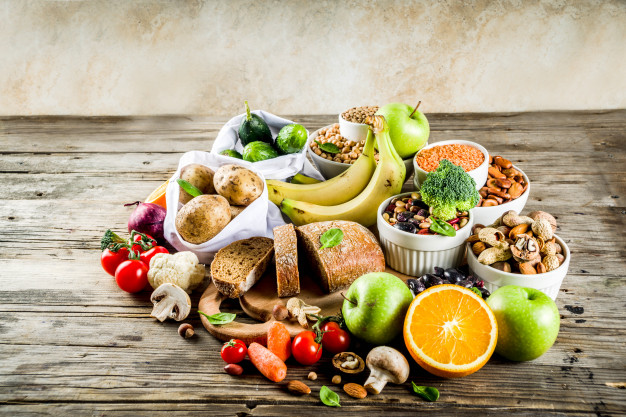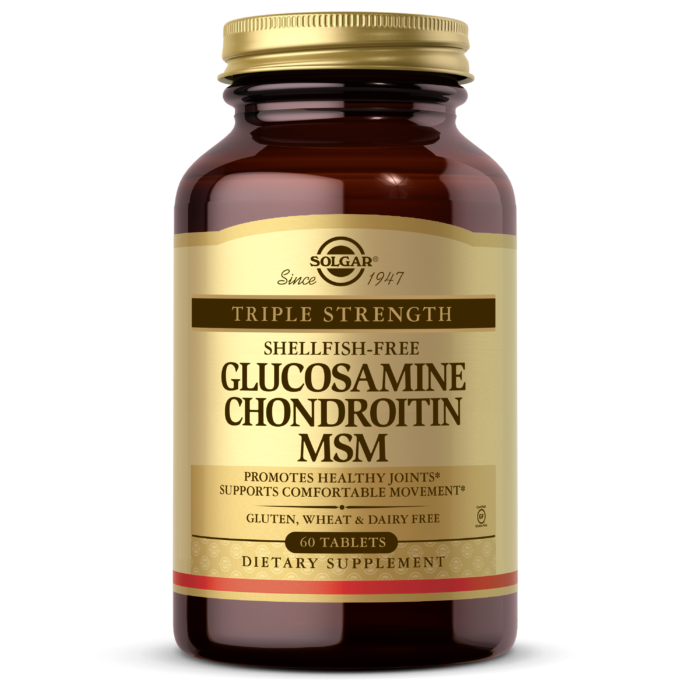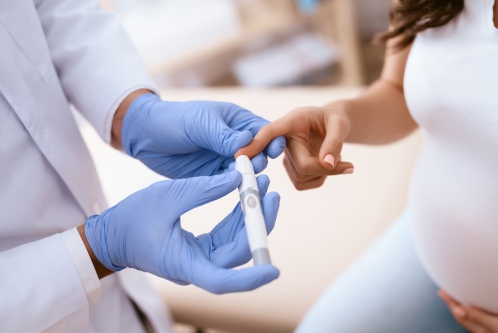Glucose is a type of carbohydrate. It is known as monosaccharide as it contains single sugar unit. It is also known as the simplest form of carbohydrate as it is the end product of carbohydrate digestion and it directly absorbed in the blood stream. It is one of the most important fuels of body that helps to provide energy. It also offers various therapeutic advantages.
Chemistry
- General formula of glucose is C6H12O6
- It is an aldose sugar. It contains aldehyde group in its structure
- It is also called hexose sugar as it contains 6 carbons in its structure
- It is widely found in two configuration that is D-glucose and L-glucose
- Glucose can form osazone after reacting with phenylhydrazine
- Usually it has a sweet taste
- Glucose is completely soluble in water
Sources
Generally all carbohydrate rich foods are containing glucose in varying range. Honey, molasses, fruit juice, sweet corn and agave are considered as the richest source of glucose whereas fresh fruits contain moderate amount of glucose.
Foods which contain glucose (in mild, moderate and high level) are listed below –
- Cereal grains
- Grape juice
- Any kind of Sugary soft drinks
- Fast foods
-
 Hot cakes with syrup
Hot cakes with syrup - Sweets
- Grapes
- Apricot, especially dried apricot
- Apple pie
- Honey
- Pasta sauce
- Cured ham
- Sweet corn

Health benefits
Role on muscle
- Glucose helps to prevent muscle soreness
- It is also associated with preventing muscle fatigue
- It has seen that during strenuous exercise, accumulation of lactic acid occurred in muscle that eventually decreases the ability of muscular performance. Blood helps to carry lactic acid from muscle to liver where it is converted into pyruvic acid and pyruvic acid then produces glucose through neoglucogenesis process. This glucose is then transported to muscle from liver via blood and this is how lactic acid is replaced by glucose in muscle, which further helps to enhancing muscular activity
- Glucose is also associated with providing adequate energy to the muscle for performing its function thus consumption of glucose water is extremely helpful for increasing the endurance
Role on energy yielding
- Glucose is considered as an effective energy booster as it is associated with providing instant energy to the body
- It has seen that at first glucose is converted into pyruvic acid through the process of glycolysis after that pyruvic acid is converted into acetylCoA, which is then entered into TCA cycle and produces various reducing equivalents. At the end these reducing equivalents are entered into electron transport chain, then oxidative phosphorilation occurred and finally ATP (energy) is produced

Role on nervous system
- Glucose is considered as the main source of energy for brain as brain utilizes only glucose for its function
- After complete digestion of carbohydrate, glucose is produced, which is then absorbed in blood and transported to brain cells. Every brain cells utilized glucose for synthesizing ATP, which is finally used by those respective cells for performing their action. Thus consumption of glucose or glucose rich food is very much important for maintaining proper functioning of nervous system
- It also helps to reduce the prevalence of neurological disorders
Role on regulating body temperature
- It plays significant role in cooling down the body temperature
- It has seen that during summer consumption of glucose is very effective for staying cool
- In hot climate excessive sweating occurred and it is associated with developing dehydration as excessive losses of electrolytes as well as water occurred through sweat. In this condition consumption of glucose along with water is considered as one of the best option
Role on improving health status
- Body requires energy for performing its daily functions and it has seen that maximum energy (about 65 to 70%) is came from carbohydrates
- At first carbohydrate rich foods are digested by various carbohydrate splitting enzymes of gastrointestinal tract and converted into glucose. Glucose is then absorbed into blood and the blood transported absorbed glucose to every cells of the body, where it is utilized for energy purposes
- Glucose undergoes several catabolic reactions, where it produces ATP, which is well used by the body for performing its physiological processes such as respiration, excretion, circulation, reproduction, heart rhythm etc. Proper availability of glucose is very much essential for maintaining the normal functioning of all organs of body thus helps to keep an individual healthy


Regulation of blood sugar level
- Glucose is a simple sugar and body receives glucose by consuming carbohydrate rich food. As mentioned above carbohydrates are digested and form glucose, which is then absorbed into blood vessels from intestinal epithelial cell with the help of sodium ion. When glucose is travelled through blood stream then it is called blood sugar. It has estimated that normal level of blood glucose is ranging from 70 to 110 mg/dl. Two hormones play important role in regulating the blood sugar level, which are, insulin and glucagon
- When the concentration of glucose get increased in blood (after consumption of carbohydrate rich food) then pancreas secretes insulin hormone. Insulin helps to carry glucose from blood to liver where it stores glucose (in the form of glycogen) for future purpose as a result the level of glucose in blood get decreased and returns to the normal level
- On a contrary, when blood glucose level get decreased then stored glycogen in liver is broken down and releases glucose molecules to the blood by glycogenolysis process as a result blood glucose concentration get increased

Hypoglycemia
- Hypoglycemia is a condition in which the concentration of blood sugar decreased
- It can be caused by various factors like hormonal imbalance, overproduction of insulin, alcoholism, prolong consumption of hypoglycemic drug etc.
- It is very severe in its manifestation. It mainly affects the nervous system as brain only utilizes glucose for energy purpose (mentioned above) and unavailability of glucose (in the case of hypoglycemia) significantly decreases the ability of brain for performing its task as a result various complications are developed like anxiety, confusion, memory loss, poor cognition, poor learning ability and functional brain failure
- Blood sugar level less than 40mg/dl is considered as extremely severe condition, it may cause death. Thus it is always better to maintain a healthy blood sugar level
Hyperglycemia
- Hyperglycemia is a condition characterized by elevated blood sugar level. Insufficient insulin production is considered as the main causative factor for this condition as glucose cannot transported from blood to liver due to unavailability of insulin as a result glucose concentration get increased in blood and eventually develops hyperglycemia or diabetes
- Presence of too much glucose in blood for long period of time is responsible for damaging those blood vessels, which carry oxygenated blood to the body that ultimately affects the overall health status
- Hyperglycemia should be prevented properly otherwise it may affect nerves, eyes, heart and kidneys adversely

What should be done if the blood glucose level drops or get increased
When blood glucose level get decreased then it is better to consume glucose or sugar immediately for preventing the harmful consequences of hypoglycemia. Whereas when blood glucose level get increased then hypoglycemic drug should be consumed as per physician recommendation and fibre rich diet should also be consumed as fibre slows down the rate of glucose absorption from intestinal epithelial cells.

Source:
Bruen, D., Delaney, C., Florea, L. and Diamond, D., 2017. Glucose sensing for diabetes monitoring: recent developments. Sensors, 17(8), p.1866.
Dienel, G.A., 2019. Brain glucose metabolism: integration of energetics with function. Physiological reviews, 99(1), pp.949-1045.
Liu, X., Cooper, D.E., Cluntun, A.A., Warmoes, M.O., Zhao, S., Reid, M.A., Liu, J., Lund, P.J., Lopes, M., Garcia, B.A. and Wellen, K.E., 2018. Acetate production from glucose and coupling to mitochondrial metabolism in mammals. Cell, 175(2), pp.502-513.
Mouri, M. and Badireddy, M., 2020. Hyperglycemia. StatPearls [Internet].
Petersen, M.C., Vatner, D.F. and Shulman, G.I., 2017. Regulation of hepatic glucose metabolism in health and disease. Nature reviews endocrinology, 13(10), pp.572-587.
Yale, J.F., Paty, B. and Senior, P.A., 2018. Hypoglycemia. Canadian journal of diabetes, 42, pp.S104-S108.




